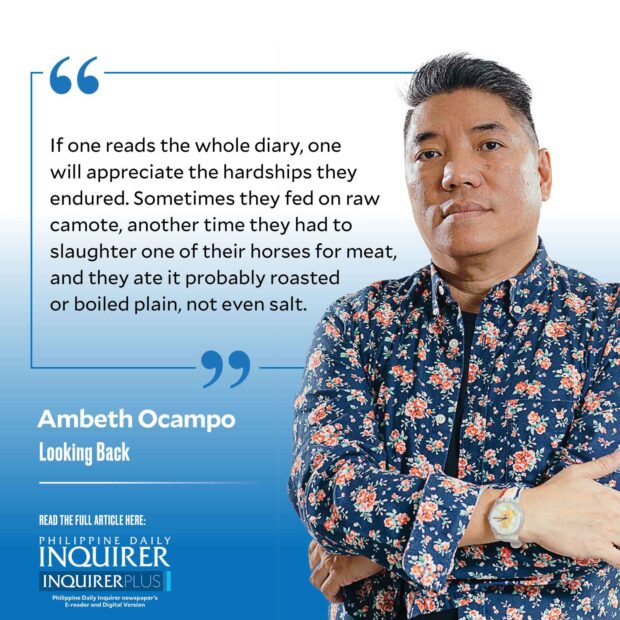
Banaue is synonymous with the iconic rice terraces that current research has proven to be younger than we want it to be. As a boy, I was taught that the rice terraces were the “eighth wonder of the world,” that these were built long before Ferdinand Magellan was killed on the shores of Mactan in 1521, that these were 2,000 years old, and built without the aid of modern building equipment. I started to question what I was taught in school when I watched a film where the giant gorilla, King Kong, was billed as the “eighth wonder of the world.” Some research in the library led me to the list of the seven wonders of the ancient world. The eighth wonder could be anything. Today, Araling Panlipunan students will be taught that based on the latest research by a team led by Stephen Acabado of the University of California, Los Angeles Department of Anthropology, the rice terraces were built in the 17th century, or the Spanish period. Based on their research, taro was the staple before rice.
Banaue, for me, is associated with the “Banaue Breakfast” that Emilio Aguinaldo had in those parts as he fled deep up northern Luzon to escape the Americans. We know of this breakfast from the diaries of Simeón Villa, one of Aguinaldo’s aides, who noted this when they were in the Cordilleras:
“The so-called Banaue Breakfast is enjoyed every morning by the President and [his] family during their stay in this rancheria [barrio]. It is tasty, light, and digestible, cheap and easy to prepare. It has been preferred by all who have tasted it and by the President himself when he comes to any of these mountains. It consists of milk and coffee, fried camote [sweet potato], and five to seven millimeters thick of butter. It was named thus by the President.”
I have had camote for merienda, not for breakfast, nor paired with coffee and milk. Fried camote can be a substitute for fries and taken with catsup, but if I try this Banaue Breakfast sometime, I will probably lather the camote generously with butter before adding a crunchy layer of caramelized sugar on.
If you go to Singalong street, entrance of St. Scholastica’s College in Manila, you will see a bronze historical marker that reads:
“Birthplace of Jose Garcia Villa. Born August 5, 1908 Died February 7, 1997. National Artist for Literature, 1973. The first Great Filipino Modern Poet. Master of Experimentation. Villa with his exquisite literary sense and courage to challenge existing conventions led Philippine poetry in English into the Modern Era.
“Landmark installed October 1999 by Manila Mayor Jose Atienza, Jr., Museo Pambata Foundation, and the Philippine Board on Books for Young People.”
The historical marker failed to mention that Col. Simeón Villa, who accompanied Aguinaldo to Palanan, Isabela, was the father of the poet. Reading Colonel Villa’s diaries, one can conclude that “Doveglion” (the young poet’s pseudonym based on dove+eagle+lion) didn’t inherit his literary skills from his father’s genes. Nevertheless, we read Simeón Villa for history, not literature, and come across another reference relevant to the Acabado findings on the age of rice farming and the rice terraces. Villa wrote in December 1899:
“There was an abundance of camote, but rice was so scarce that our meals had been reduced to twice a day; the first consisted of camote cooked at nine in the morning, and the second at three in the afternoon, consisted of rice and meat. Our ration was one-half chupa [a third of a liter] only so we never felt satisfied. When meat was not available, and this was really scarce, we had camote tops and pepper leaves cooked in salt and water. Sometimes when rice was scarce, camote took its place in our afternoon meal, so we had camote the whole day.”
So deprived was the presidential party that they wished for better times and meals. Then, “One moonlit night the President [and others] agreed that once the independence of the country was declared, we would travel leisurely through Europe with a budget of one million pesos for expenses.”
Aguinaldo’s detractors use the above quote to depict him as greedy for money, when Villa makes the context clear, Aguinaldo said this in jest and out of desperation. Teodoro Agoncillo said of the above quote once that “a man cannot be blamed for dreaming.” If one reads the whole diary, one will appreciate the hardships they endured. Sometimes they fed on raw camote, another time they had to slaughter one of their horses for meat, and they ate it probably roasted or boiled plain, not even salt. When food and water was scarce, they almost went mad with hunger and thirst. Then add to this malaria from mosquitoes or being beset by leeches when they crossed the streams and fields. Not all Cordillera people made them welcome, some groups stoned them as they ascended the trails.
What has been called “Aguinaldo’s Odyssey” can be gleaned from the diaries of Colonel Villa and Aguinaldo’s physician in Dr. Santiago Barcelona whose originals are preserved in the National Library of the Philippines.
—————-
Comments are welcome at aocampo@ateneo.edu

